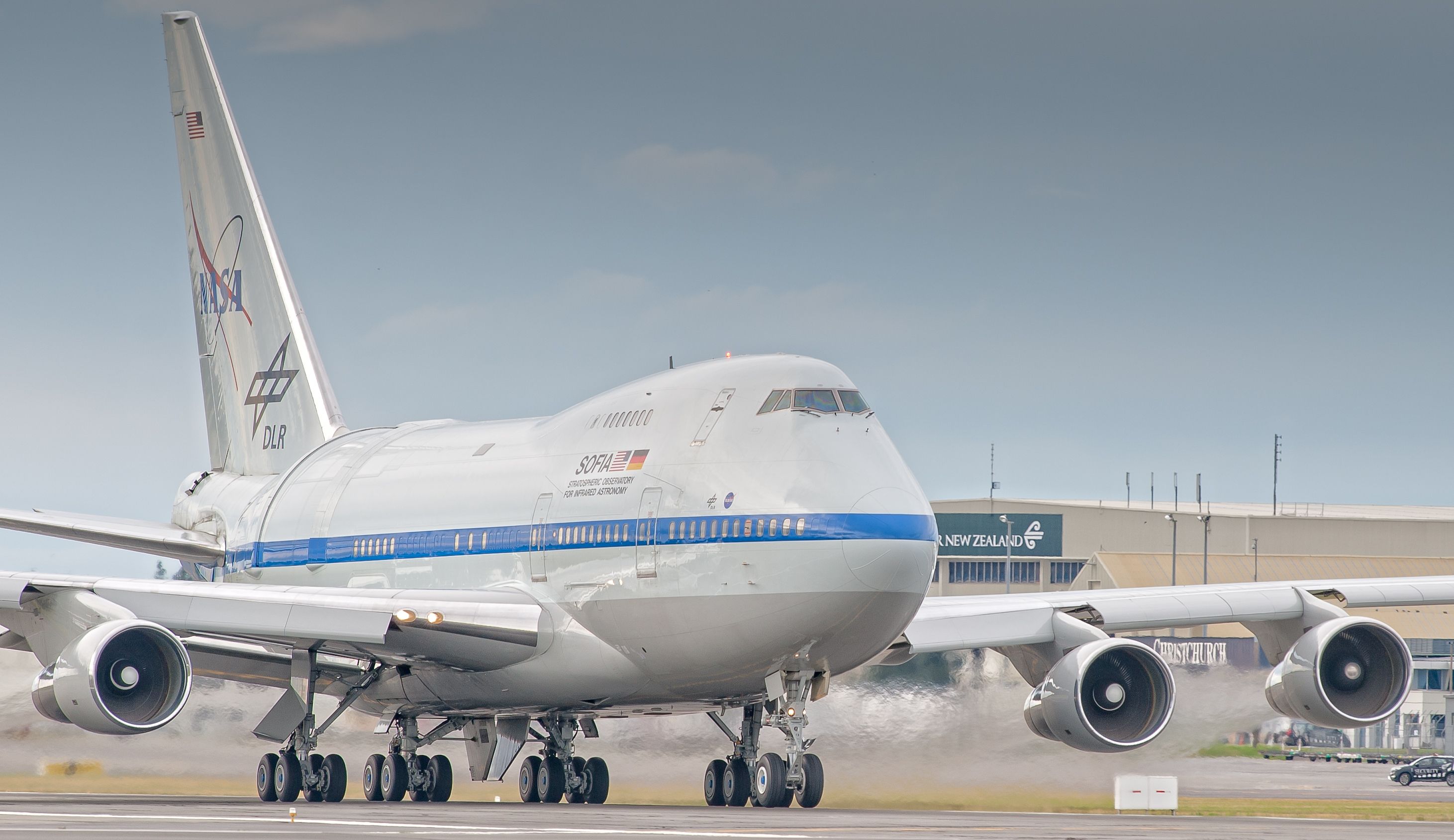The Boeing 747SP, registration N747NA, owned by NASA and modified to carry a reflecting telescope for the SOFIA (Stratospheric Observatory for Infrared Astronomy) mission, was damaged in New Zealand earlier this week. This iconic aircraft is currently grounded and undergoing maintenance.
What happened?
NASA reported that on Monday, July 18, SOFIA’s Boeing 747SP was damaged by a storm that affected the area around Christchurch International Airport (CHC) in New Zealand.
During the severe weather event, high winds caused the stairs outside the aircraft to shift, causing minor damage to the front of the aircraft, as well as the stairs themselves.
Although there were no injuries due to this incident, NASA is currently assessing the damage to the aircraft and expects to receive new stairs.
The SOFIA team has determined that the necessary repairs will take at least three weeks. NASA sent the Boeing 747SP to New Zealand to better observe celestial objects in the southern hemisphere. This is SOFIA’s last mission to the Southern Hemisphere before NASA and its German Space Agency partners Deutsches Zentrum für Luft- und Raumfahrt (DLR) end the program after more than a decade. .
What happens to SOFIA’s last mission abroad?
Following the incident, the SOFIA team released a statement indicating that they were adjusting their scientific observation plans and canceling the remainder of their Southern Hemisphere deployment.
As the necessary repairs on the “Queen of Heavens” (or shall we say the Universe?) will take at least three weeks, this eliminated the possibility of carrying out the remaining scientific observation flights which were planned from New Zealand until August 7.
SOFIA arrived in New Zealand on June 18 and had a successful and productive month of science flights.
The aircraft will return to its usual base of operations in Palmdale, Calif., and resume science flights once repairs are complete.
During its deployment, SOFIA observed and studied a wide range of celestial objects and phenomena, such as cosmic magnetic fields, the structure of the Milky Way and the origin of cosmic rays. The team also participated in several outreach events and shared information with students, youth groups, museum visitors and members of the aerospace industry.
SOFIA will stop flying this year. Photo: NASA/SOFIA/Waynne Williams.
The end of the SOFIA mission
Few aircraft are currently as iconic as NASA’s Boeing 747. This aircraft was modified to carry a 2.7 meter reflecting telescope. It flies into the stratosphere at 38,000-45,000 feet, placing SOFIA above 99% of Earth’s infrared-blocking atmosphere, allowing astronomers to study the solar system and beyond a impossible with ground-based telescopes.
Nevertheless, the SOFIA mission is scheduled to end in October 2022. During the 2020 National Academies’ Ten-Year Survey of Astronomy and Astrophysics, NASA evaluated SOFIA and concluded that its scientific productivity did not justify its research costs. functioning. Moreover, SOFIA’s capabilities do not significantly overlap with the scientific priorities that the decadal survey has identified for the next decade and beyond.
Consequently, the 10-year survey recommended that NASA terminate the SOFIA mission. NASA and DLR accepted the recommendation.
Last month, the US House of Representatives Appropriations Committee announced that it would provide no less than $30 million to SOFIA to ensure an orderly closure of the mission. He also asked NASA to report on its strategy “to mitigate science and data collection that will no longer be produced by SOFIA, including any gaps in science capabilities and any other information that would normally be considered part of a high-level review.”
Have you ever seen NASA’s SOFIA Boeing 747SP up close? Where was he? What should NASA do with the plane once it’s retired? Let us know in the comments below.
 Jenam 2011
Jenam 2011